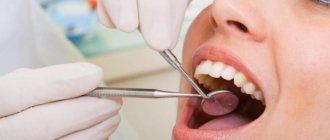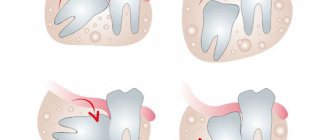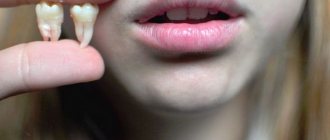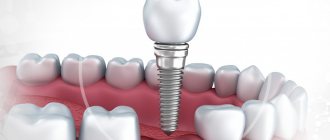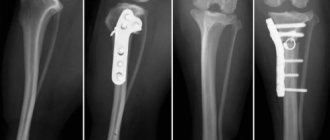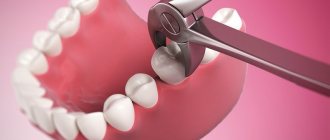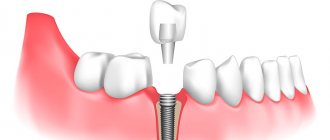Indications and contraindications Pros Cons Implantation process Alternatives
Teeth transplantation from your own dentition is a procedure that is used as an alternative to implantation. Every person has teeth that are not involved in the chewing process, do not affect the bite and do not perform any important functions. These are wisdom teeth. They are the ones who most often become donor teeth. But not always.
There are teeth that grow outside the arch, spoil the smile, and provoke inflammation. You can get rid of the problem through orthodontic treatment: installing splints, plates, braces. There are times when the only option is deletion. Then the tooth has a chance to benefit its owner. It can be transplanted to a place where a tooth is lost or planned to be pulled out.
Another source of donors for transplantation is supernumerary teeth. Some people grow double teeth. Such units are direct candidates for removal. At the same time, they can be beneficial by replacing a sick or lost brother.
Replacing an artificial root
Sometimes it happens that the patient’s body rejects the implant. Most often this happens due to the fact that the body perceives the implant material as a foreign body. In this case, the dentist has no choice but to remove the implant. Fortunately, nowadays it is possible to reuse an implant of a different design. Reimplantation is necessary in the following cases:
- implant rejection;
- dentist mistakes;
- use of a defective implant;
- the patient’s failure to comply with the dentist’s recommendations;
- deterioration of general health;
- expired implant.
Separately, it is worth mentioning jaw injuries. Sometimes even a minor injury causes the artificial structure to begin to wobble. In this case, you have to resort to reimplantation.
At the same time, a worn-out crown can be replaced by installing it on the previous artificial root. The same applies to replacing the abutment - the connecting link between the crown and the implant.
How is the old implant removed?
First of all, it is worth saying that if any problems arise with the implants, then you should only contact the clinic where they were installed. This is important, including for financial reasons. The savings are explained by the fact that a new design calculation is not required.
Most implant manufacturers usually guarantee their impeccable service for 5-7 years. Reputable manufacturers provide such a guarantee for decades and even for life. Of course, the cost of such implants is very high, if not unaffordable for most of our fellow citizens. In addition, reimplantation is not considered the fault of the manufacturer, and therefore has to be paid for again. Only some clinics do it for free in order to raise their authority.
This dental operation is performed in the following sequence:
- disinfection of the oral cavity;
- crown removal;
- removal of the implant from the jawbone.
After this, the patient will have to undergo examinations to determine the cause of implant rejection. After doctors determine the cause, the treatment stage begins.
How much does it cost to replace a damaged implant or tooth?
Reimplantation of your own tooth in Moscow, including its primary fixation, depending on the clinic and the experience of the specialist, will average from 2,500 rubles. Therapeutic preparation is assessed separately.
If the problem with the implant occurred due to the patient’s fault, you will have to pay from 5,000 rubles for removal, installation of a new one will cost from 15,000 rubles.
The final price will depend on:
- complexity and number of additional manipulations;
- region of location and status of the clinic;
- qualifications of the attending physician;
- implant models.
Oral hygiene after implant removal
For several hours after removal of the implant, you should avoid eating altogether. You should absolutely not drink alcohol or smoke for two days. This can cause inflammation not only in the gums, but also in the jawbone. During the first day after surgery, you should not brush your teeth or even rinse your mouth with elixir solutions. Then you can brush your teeth only with a soft toothbrush. In this case, irrigators and flosses should not be used at the site of implant removal.
Wisdom tooth transplant as a way to replace a defect
Of course, Kim was very surprised, but we showed her photographs of successful operations (and we have all of them successful), apparently our persuasiveness and the patient’s desire played a positive role in making the decision to transplant the eighth tooth. She was happy and agreed to the operation.
Moreover, in this case we did not even have to make a stereolithographic model of the tooth, since all surgical procedures (extraction and transplantation) were performed on the very first day of her visit to our clinic.
Dental transplant surgeries typically require several days of preparation, as we describe in the following clinical case study. But in this case, taking into account the current clinical situation and relying on our many years of successful experience in tooth transplantation, we were able to transplant tooth 8 into the place of tooth 6 as quickly as possible. We had all the indications for current dental transplantation.
The donor was an impacted (completely hidden under the gum) wisdom tooth 48. In fact, as we joked, it was a neighbor tooth to the problematic six. That is, the tooth grew and grew for 20 years, waited in the wings, and that hour struck! Now this donor tooth is for another 30 years
at least he will live in a new place.
If you look at the sixth tooth from the side, you can see bluish, literally purple gums
:
This color of the gums is due to the developed inflammatory process. The patient developed destruction of bone tissue against the background of advanced periodontitis. There was a crack in the root of the sixth tooth.
Sequence of re-implantation
The first stage is examination and treatment.
At the second stage, the surgical operation is performed directly. At this time, the supporting part of the implant is installed in the bone bed, which in most cases is first increased in size using a special cutter.
The third stage of re-implantation begins one to two weeks after root installation. At this time, an incision is made on the mucous membrane to expose the upper part of the implant. This is necessary to install a gum former or an abutment made of titanium. The dentist begins the fourth stage only after three to six months. At this time, a dental crown is installed.
Preparation for replantation
Before the operation, the doctor examines the patient’s oral cavity and selects the appropriate technique.
Mandatory training includes such manipulations as:
- treatment of identified dental diseases;
- cleansing tooth enamel from stones and pathogenic plaque;
- cutting off the upper part of the root;
- cleaning and filling carious cavities (if any).
After preparation and elimination of defects, the patient is sent for an x-ray. Using X-rays, the doctor assesses the quality of the filling and then begins replantation.
Important! Immediately before the procedure, you should not eat, smoke, drink alcohol or exercise, and your mouth should be clean.
Indications and contraindications for natural tooth reimplantation
This type of operation is the exception rather than common practice. It is impossible when there is atrophy of a section of the jaw bone, as well as when adjacent crowns are closed.
When is reimplantation indicated:
- loss due to crown injury;
- dislocation when removing molars;
- jaw bone fracture;
- root perforation;
- canal obstruction;
- injury when removing adjacent crowns.
Contraindications for reimplantation:
- extensive caries;
- the presence of diseases of the jaw bone tissue in acute form;
- gum disease;
- severe curvature of the roots;
- cardiovascular diseases;
- mental illness;
- acute infectious disease;
- oncological neoplasms;
- acute radiation sickness.
After autotransplantation 2 weeks
Patient Kim came to us after 2 weeks
for medical examination and suture removal:
Nothing bothered her anymore. The tooth had acceptable physiological mobility. The gums have become lighter. Of course, all the purple color is not gone yet, but she has already become more pink.
Pay attention to the white area - this is not pus, but fibrin plaque, which we will talk about in more detail below.
The picture shows that the donor tooth has clearly positioned itself in the position of the extracted tooth 46:
Our Kim has a new six molar. Both the patient and the medical staff of the Research Center are very pleased with the outcome of the tooth transplantation operation.
Which tooth can be reimplanted?
A lost tooth can be implanted only if it meets certain conditions. These are:
- integrity of the tooth crown;
- straight tooth roots;
- proper storage of a lost tooth (up to two days in a sodium chloride solution at a temperature of 37 - 40 degrees).
The success of this operation greatly depends on the professionalism of the dentist. This is especially true when the tooth is not lost, but is severely loosened due to injury. Such a tooth sometimes has to be carefully removed and then put back in place.
Kinds
Traditional orthopedic classification distinguishes two treatment formats:
- Vital restoration - used in situations where the crown and pulp remain unharmed, is not accompanied by canal filling, and involves splinting the row using wire or styracrylic tape.
- Devital restoration is a more complex procedure that combines extraction of the problematic tooth, removal of root processes and filling of the canals with composite material. The element is reintegrated into the row after processing is completed.
The choice in favor of one of these methods depends on the results of the examination conducted at the preliminary stage.
Advantages of reimplantation
Perhaps it’s worth repeating and saying that reimplantation can only be successful if you consult a doctor in a timely manner. As for the advantages, these include:
- preservation of natural teeth;
- the operation is performed once;
- the possibility of implanting a lost tooth after two days;
- quick implantation;
- long service life (5 - 20 years);
- the cost of the operation is low.
It is also worth considering as an advantage the fact that when a natural tooth is implanted, the overall architecture of the dentition is not disturbed. Inflammation during implantation is practically not observed. Neighboring teeth do not move, and degeneration of the jaw bone area does not occur.
What it is?
Dental transplantation or transplantation is an operation in which a dental surgeon transplants an existing tooth germ or the tooth itself to the place where it is missing. Most often, this is autotransplantation of teeth - that is, the patient’s own teeth or their rudiments are used to restore a gap in the dentition.
The transplanted tooth germ develops in the new socket in the same way as its neighbors in their native sockets. Its root system grows into the jaw bone, so the nutrition of the tooth is no different from the nutrition of its neighbors. This ensures the reliability of the transplant result. As a result, such a tooth fully replaces the lost one. This technique is used for:
- congenital absence of a tooth, when the formation of a tooth germ has not occurred;
- tooth loss due to injury;
- removal due to deep caries;
- tooth extraction on the recommendation of an orthodontist, since some defects in tooth development can lead to malocclusion.
In addition to transplantation, there is a method of tooth reimplantation. The fundamental difference between them is that during reimplantation, the doctor first removes the tooth and then implants it in the same socket. Most often, this technique is used to eliminate a source of infection that cannot be eliminated by conservative therapy. A common feature of reimplantation and tooth transplantation is that it is important to preserve the integrity of the tooth and its roots.
Sequence of the operation
Reimplantation of a natural tooth is always done under local anesthesia and in several stages. Their order is as follows:
- anesthesia;
- careful extraction of the tooth while maintaining the size of the socket;
- keeping the extracted tooth in a sodium chloride solution;
- treatment of the extracted tooth, if necessary, and removal of plaque;
- cleaning the socket and gum pocket;
- disinfection of the socket and gum pocket;
- placing the tooth in its original place.
Complete implantation of the tooth usually occurs on the 20th day after surgery.
Reimplantation of a natural tooth with splinting
In some cases, the installed tooth must be strengthened. This technique is called splinting. Its essence is to install a special thin plate or aramid thread on the inner surface of the tooth crown and on two adjacent teeth. In addition, splinting can be done using caps. In the latter case, the patient will have to wear them for a month, or even a month and a half.
Splinting in most cases is used for dislocated teeth, as well as single-rooted ones. Multi-rooted teeth are installed without splinting. The splinted tooth is excluded from the bite by slightly grinding down the tubercles on its upper part.
Postoperative period
During the first two hours after tooth reimplantation, you should under no circumstances eat or drink. Then for 24 hours you should stop cleaning and rinsing your mouth, spitting, smoking and drinking alcohol. In addition, physical activity should be avoided during this time. Under no circumstances should you eat solid food for three to four days after surgery. It is advisable not to eat anything other than thin first courses. During this time, some patients may experience tissue swelling. In such a situation, you have to apply compresses and take antibiotics and sometimes painkillers.
A prerequisite is to visit the dentist two days after the operation.
What could be the consequences?
If the implantation process proceeds normally, it is usually completed 4 to 6 weeks after surgery. The process of tooth implantation itself can proceed in different ways. It depends on what preliminary measures the dentist had to apply
During periodontal preparation, the periosteum of the alveoli and the remains of periodontal tissue are completely preserved.
With periodontal fibrotic preparation, the alveolus and tooth roots are only partially preserved. During osteoid preparation, the periosteum of the alveoli and periodontium is completely removed.
The fastest way to implant a natural tooth is with the periodontal preparation method. On the contrary, this process occurs most slowly with the osteoid method.
After reimplantation, intact and completely healthy teeth last the longest. If the operation is not performed accurately, it may happen that the tooth roots begin to dissolve, causing the tooth to become very loose and have to be removed.

